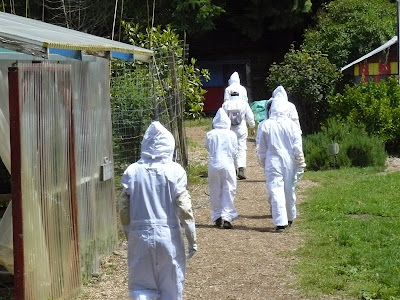All gardeners know that spring is the time to give the
garden a “face lift” for summer. In our
Pollinator Garden, the work began early to prepare for the arrival of
beneficial insects and birds eager to forage on nectar and pollen.
 |
| Flowers welcome our wonderful pollinators - Photo credit: Jessica Gonzales (USFWS) |
This spring, the U.S. Fish and Wildlife Service (USFWS) and the Natural Resources Conservation Service (NRCS), teamed up to add new plants, such as showy penstemon, mountain hollyhock, snow buckwheat, arrowleaf balsamroot and snowberry, and a new thick layer of bark mulch to the office’s Pollinator Garden.

